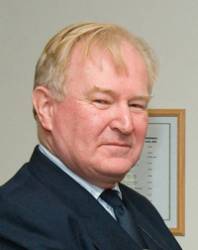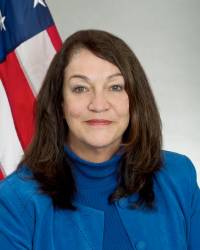When talking to J. David Grossman, the new executive director of the GPS Innovation Alliance (GPSIA), one word comes up quite often: excited.
It’s no surprise that those who follow GPS and its ever-present role in our everyday happenings are excited these days about the technology’s abilities and its future applications, but Grossman can hardly contain his passion about his new role with the GPSIA and what he sees as a future world where GPS — and all Global Navigation Satellite Systems — improve the way we farm, travel, protect critical infrastructures and much more.
“You know, when you come down to it, GPS is really part of everything in our daily lives,” he told Inside GNSS in an interview.
“To me that’s pretty exciting.”
Grossman became the executive director of the Alliance two months ago, right about the time the GPSIA was marking its fifth anniversary. In 2013, the GPSIA was founded with a goal to protect, promote and enhance the use of GPS.
What followed over the next five years created plenty of excitement as the industry continued to expand and flourish. By one estimate, GPS is estimated to provide a direct economic benefit of more than $67.6 billion per year and an indirect benefit of $122.4 billion in the United States alone. When it comes to jobs, GPS manufacturing is employing 130,000 people and an even larger pool of jobs, 3.2 million, relies on GPS technology.
Some of those impressive figures were shared in the first blog Grossman published after beginning his new career chapter with the Alliance. You can read his blog “Driving America’s Future through GPS” on the GPSIA website.
So it’s no wonder Grossman and the Alliance get excited when talking about the industry. Grossman’s past includes nearly nine years in government service, most recently serving as the chief of staff to Federal Communications Commissioner (FCC) Mignon Clyburn, where he says it was in that role that he was the architect in establishing a strategy and a message in what Clyburn called “putting consumers first”.
“It helps tell the story of how I got here and why I’m so excited to be able to be a part of this chapter of the GPS Innovation Alliance,” said Grossman, who started out his career on the private sector side, including positions first at a law firm in an analyst capacity and then at the Consumer Technology Association where he was in the government affairs department. “My background involved traveling across the country with a focus around closing digital divides, promoting access to broadband, and advanced communication services.”
Prior to the FCC, he held roles on Capitol Hill that involved working around technology and telecommunications policy. Grossman first worked on the Hill with the house small business committee, and later for Congresswoman Anna Eshoo of Silicon Valley, supporting her work as ranking member of the House subcommittee on Communications & Technology.
“For me what’s exciting is I had the opportunity to work in a much larger trade association earlier in my career and now to be part of an association, to be the first full-time executive director in-house, and to be able to tell the exciting story of GPS and the innovation that’s come in the five years since the association started and really what’s to come,” he said.
In his first 60 or so days on the job, he has spent much of his time introducing the organization to policymakers and regulators on Capitol Hill, including the FCC and other key agencies. Grossman has also talked to related industries in tech and other areas that depend on GPS.
“I think that I have really helped to build a base, helping people understand that GPS is much more than a tool for navigation, that it’s part of precision agriculture, and it’s supporting our financial sector,” he states. “It’s being used in ride share, autonomous vehicles, drones as we talk more about package delivery…public safety, our electrical grid, the Internet of Things.”
The potential for GPS technology seems endless, and the revenue attached to it and the life-saving capabilities appear to be on track to outpace even some of the rather lofty projections made just a few years ago.
When Grossman looks back at some of the projections made at the time of the early days of the GPSIA, some of the statistics and GNSS applications that may have seemed gaudy then may very well be modest today.
“I recall a stat from I believe the FCC that suggested location based services via smartphones and portable devices will deliver $700 billion in economic value to consumers and businesses over the next decade,” he said. “I think that stat came around 2013 and just think about all the areas where we’ve seen that growth. How many of the mobile applications on our phones depend on location information? Whether it’s turn by turn navigation, whether it’s ride share applications…to use a specific example there is a company that’s linking CPR trained individuals with first responders, alerting them to medical emergencies, and allowing them to help support first responders, particularly in rural communities where the closest EMT might be 10 minutes away.”
This example, he said, is just one of many newer applications using GNSS services to help save lives. Somebody who is CPR certified and has this mobile app can be alerted that there’s a nearby medical emergency and they can respond in those precious minutes where seconds matter.
“There’s some really innovative technologies that I’m not sure anyone could have predicted even five years ago,” he said. “In that example I just used I believe there have been over 44,000 activations of that mobile app and most likely saving many lives from it.”
Awareness
Under Grossman’s guidance the Alliance is looking to create increased awareness of both the GPSIA and the capabilities of the technology in today’s world. So education really is a focus right now.
“I think that if people understand how GPS works, where it’s foundation rests, then they will understand GPS’ significance to our daily lives and to our economy,” he said. “It’s history starting through the U.S. government with investments made by the Air Force and ultimately made commercialization possible. And now it’s used in really every aspect of critical infrastructure from transportation to public safety, our electric grid, our financial system, and I think people should understand those basics, that this is just not a technology that is used on our mobile devices. It certainly has a critical role there, but it’s so much more than that.”
With the goal of creating awareness about the Alliance, Grossman is passionate about sharing the story of GPS and how it benefits a diverse array of communities, from rural farms to the halls of Wall Street. The GPSIA is committed to “promoting continued investment in satellite infrastructure; policies to combat spoofing and jamming of GPS signals; responsible use of personally-identifiable location information and policies that advance the deployment of wireless broadband while protecting GPS, one of the country’s most important and ubiquitous national utilities.”
“We’re making people aware that our association exists, who we are, and who our member companies are,” he explained. “Some of the ways that I’m hoping to do that on Capitol Hill include doing some technology demonstrations where we bring the technology to Capitol Hill. We’d like to invite staffers to see firsthand educational briefings whether it be on Capitol Hill or directly for some of the agencies. And I think from that we can build a stronger base of an understanding of these issues.”
The organization has issued statements recently on a pair of large programs, one involving precision agriculture and the other on the big announcement in May about the USDOT’s selection of 10 state, local and tribal governments as participants in the Unmanned Aircraft Systems (UAS) Integration Pilot Program.
“I think as a great example, the Alliance put out a statement last week supporting the Precision Agriculture Connectivity Act,” Grossman said describing the stance taken by the GPSIA and plans to support this legislation. “It’s not a coincidence that that’s one of the first bills that our association, in these first 60 days of my tenure, has put a statement out on. Because really it’s a game changer for farmers whether we’re talking about increased efficiency, increased productivity, reduction in inputs, whether it be water or fertilizers or pesticides, seeds, it really is a big part of the story for what it means for rural America.”
Read the Precision Agriculture Connectivity Act of 2018 statement here.
“We’re so, excited to see that bill continue to move forward,” he said.
“The GPS Innovation Alliance will be there to help push that bill forward.”
Grossman expects two other areas to continue to evolve drastically in the industry, namely increased broadband access in the U.S. and the expanded uses for the Internet of Things (IoT).
“There’s obviously a lot of focus in this country on expanding broadband access particularly when it comes to rural America … and certainly that ties in with precision agriculture because GPS and broadband access go hand in hand in powering those applications,” he said. “But I think there’s another piece of this that’s exciting and that’s the 5G revolution which is also getting a lot of attention among policymakers and regulators.”
GPS is going to go hand in hand with 5G in terms of small cell technology, additional cell towers and the timing component of GPS that is going to make that a reality.
“The other thing that’s an exciting area when we look to the future is the Internet of Things. It’s near and dear to my heart as someone who’s built my home as a smart home.” Grossman said. “It relies in all aspects of GPS location technology and I think we’re going to see more and more of that whether it be in individual homes, businesses and other applications. IoT is going to be a really exciting area of growth and GPS is going to play a big part in it.”
For those interested in keeping up with the Alliance, Grossman suggests they visit the GPSIA website, follow his blog, and check out the Twitter and LinkedIn pages.





